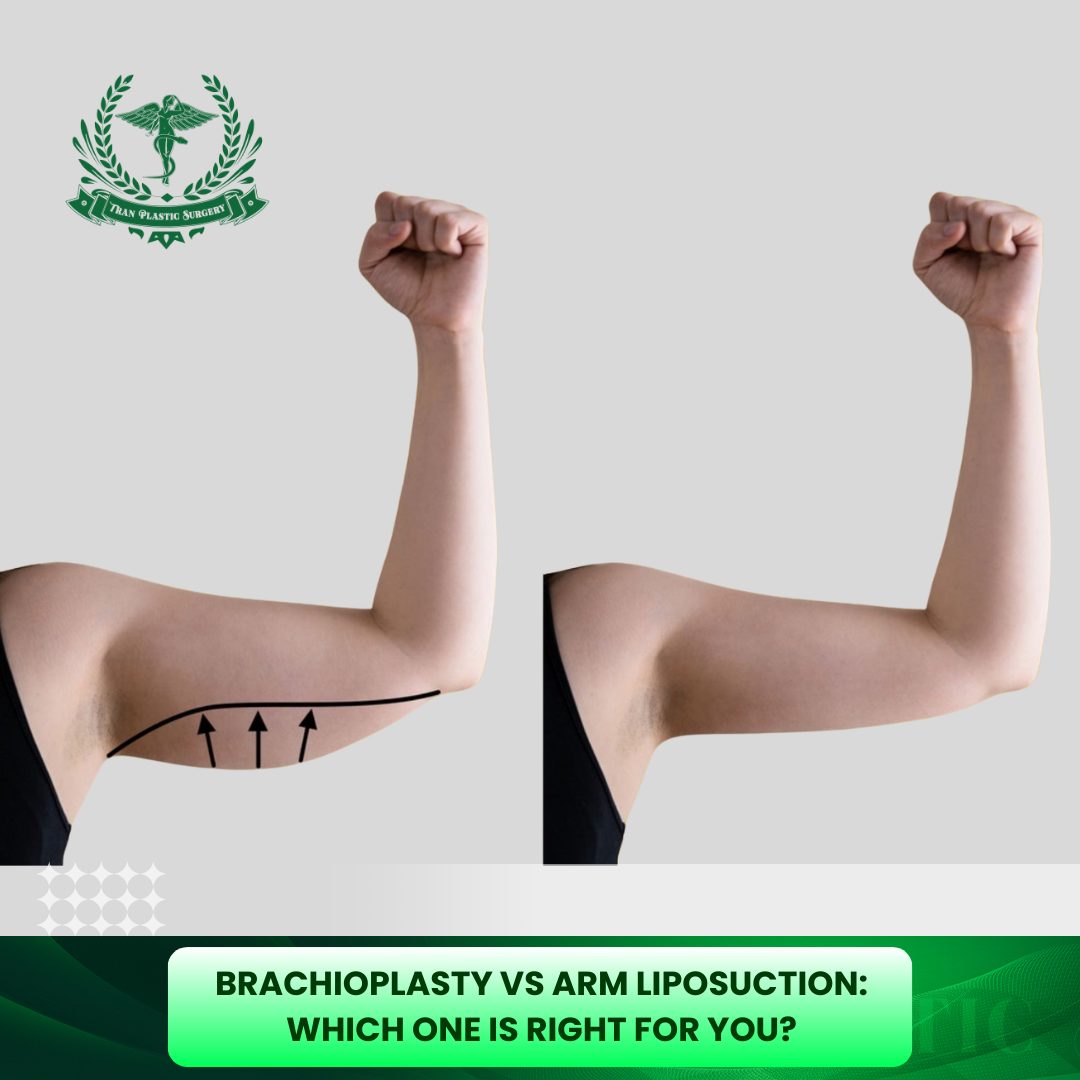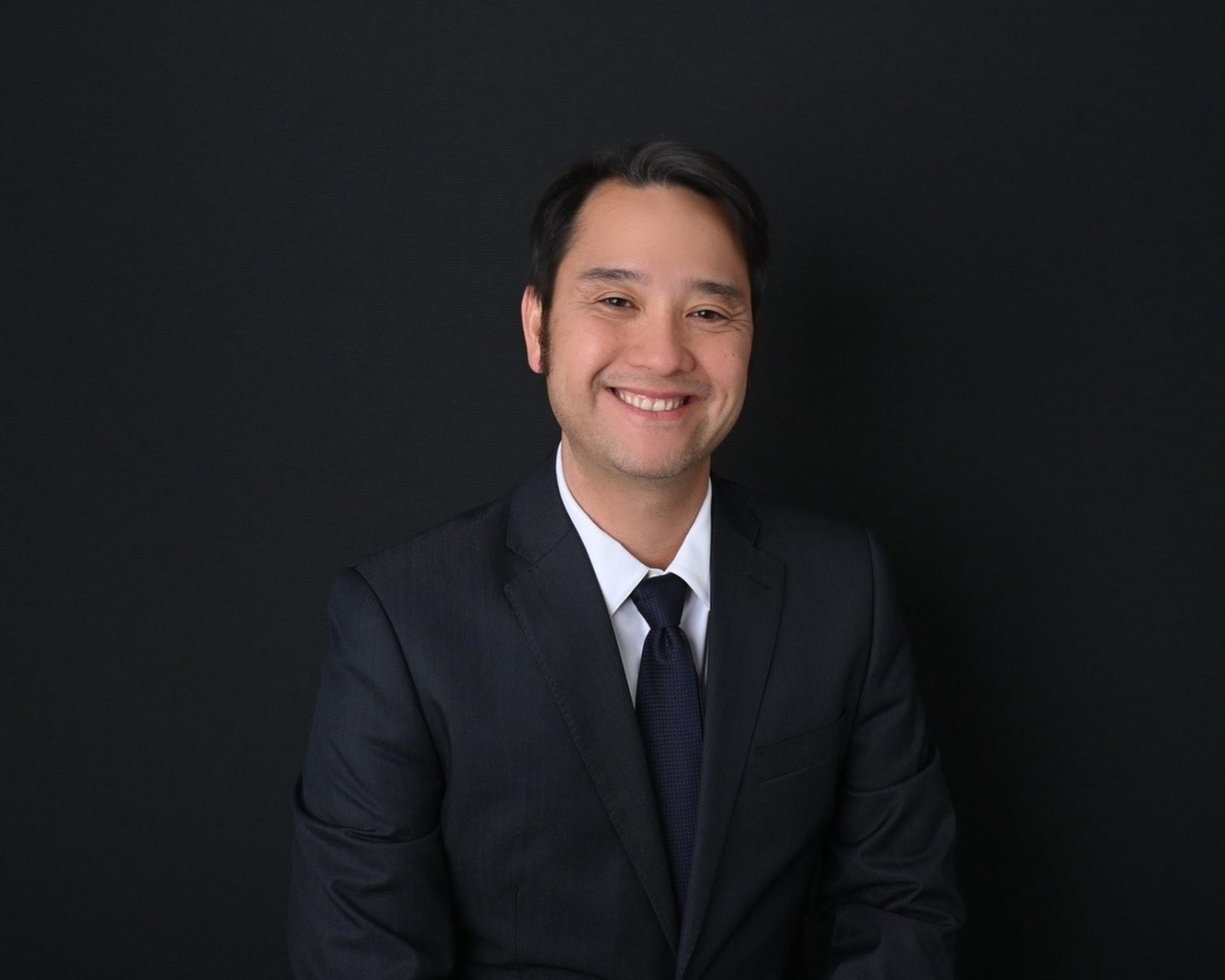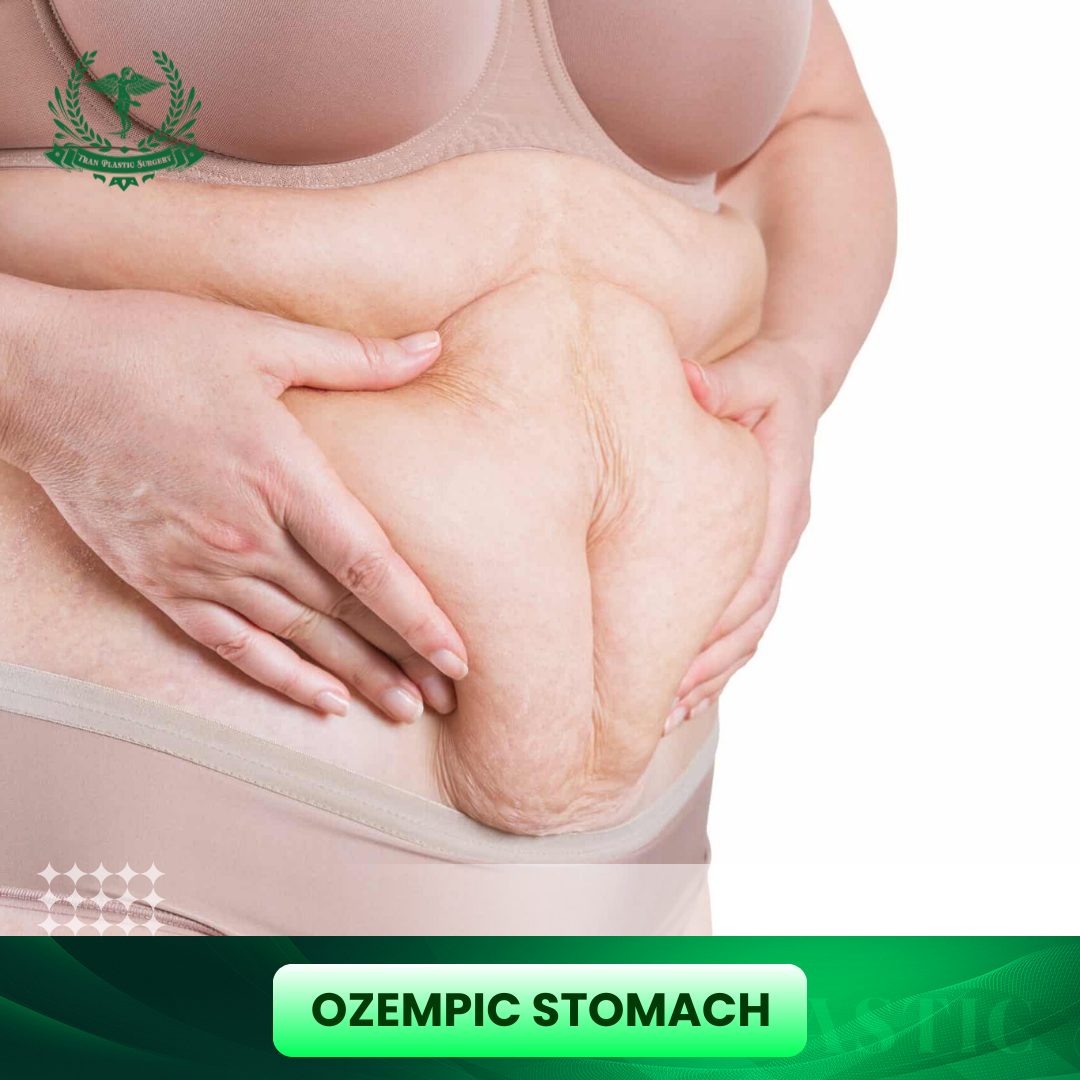For many, the upper arms can be a persistent source of frustration. Despite dedicated efforts at the gym and a healthy diet, some individuals find themselves struggling with disproportionately large or sagging upper arms, often referred to as “bat wings.” This common concern can lead to self-consciousness and limit clothing choices. If you are researching solutions to address these issues, you’ve likely encountered two primary surgical options: Brachioplasty (commonly known as an arm lift) and arm liposuction. While both procedures are designed to create a more contoured and aesthetically pleasing arm, they address fundamentally different problems.
As an expert in the field of reconstructive and cosmetic plastic surgery, I’ve seen firsthand how crucial it is for patients to understand the distinctions between these two procedures. Choosing the right path depends entirely on your specific concerns whether your primary issue is excess fat, loose and sagging skin, or a combination of both. In this comprehensive guide, we will break down the key differences between brachioplasty vs. arm liposuction to help you understand your options and take the first step toward a confident, more toned upper arm silhouette.
Table of Contents
ToggleBrachioplasty: The Definitive Solution for Sagging Arm Skin
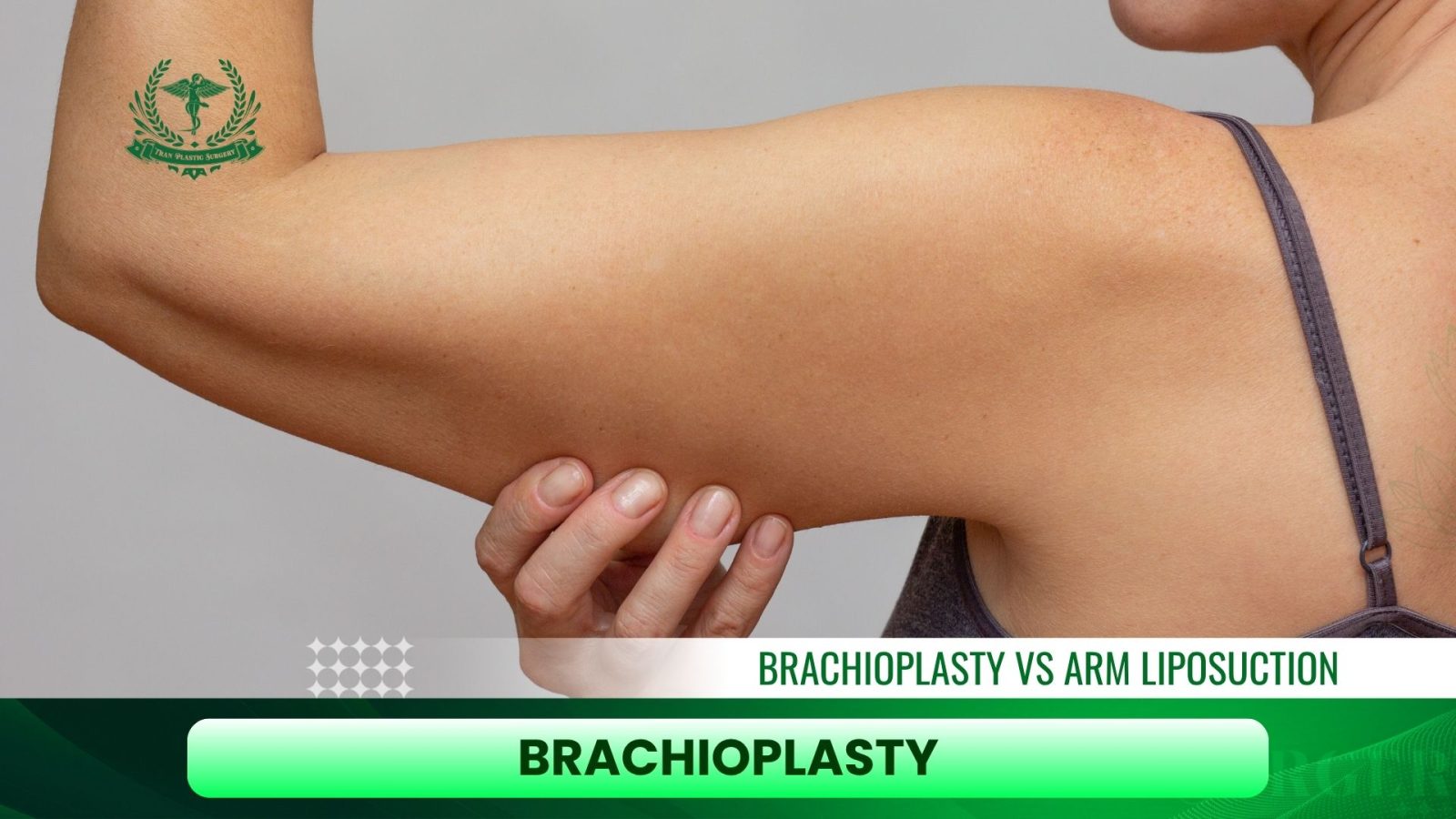
For individuals with significant skin laxity on the upper arms, brachioplasty is the gold standard. This surgical procedure is designed to correct the loose, hanging skin that often develops as a result of aging, genetics, or massive weight loss. An arm lift surgery is not simply about removing fat; it is a reconstructive approach focused on tightening the supportive tissues that have become stretched or weak.
During the procedure, a skilled surgeon meticulously excises the excess skin and fat from the underside of the upper arm, a process that effectively eliminates the “bat wing” appearance. The remaining skin is then redraped and sutured into a tighter, more toned position. The outcome is a dramatic improvement in the arm’s contour and firmness. It is essential to understand that this procedure involves a permanent, linear scar that typically runs from the elbow to the armpit along the inner arm. However, for the right candidate, someone with considerable sagging arm skin, the profound improvement in confidence and appearance far outweighs the presence of a well-placed scar.
>>> Related post: Brachioplasty (Arm Lift): Surgery, Recovery, Cost and Cautions
Arm Liposuction: Targeted Fat Removal for Slimmer, Sculpted Arms
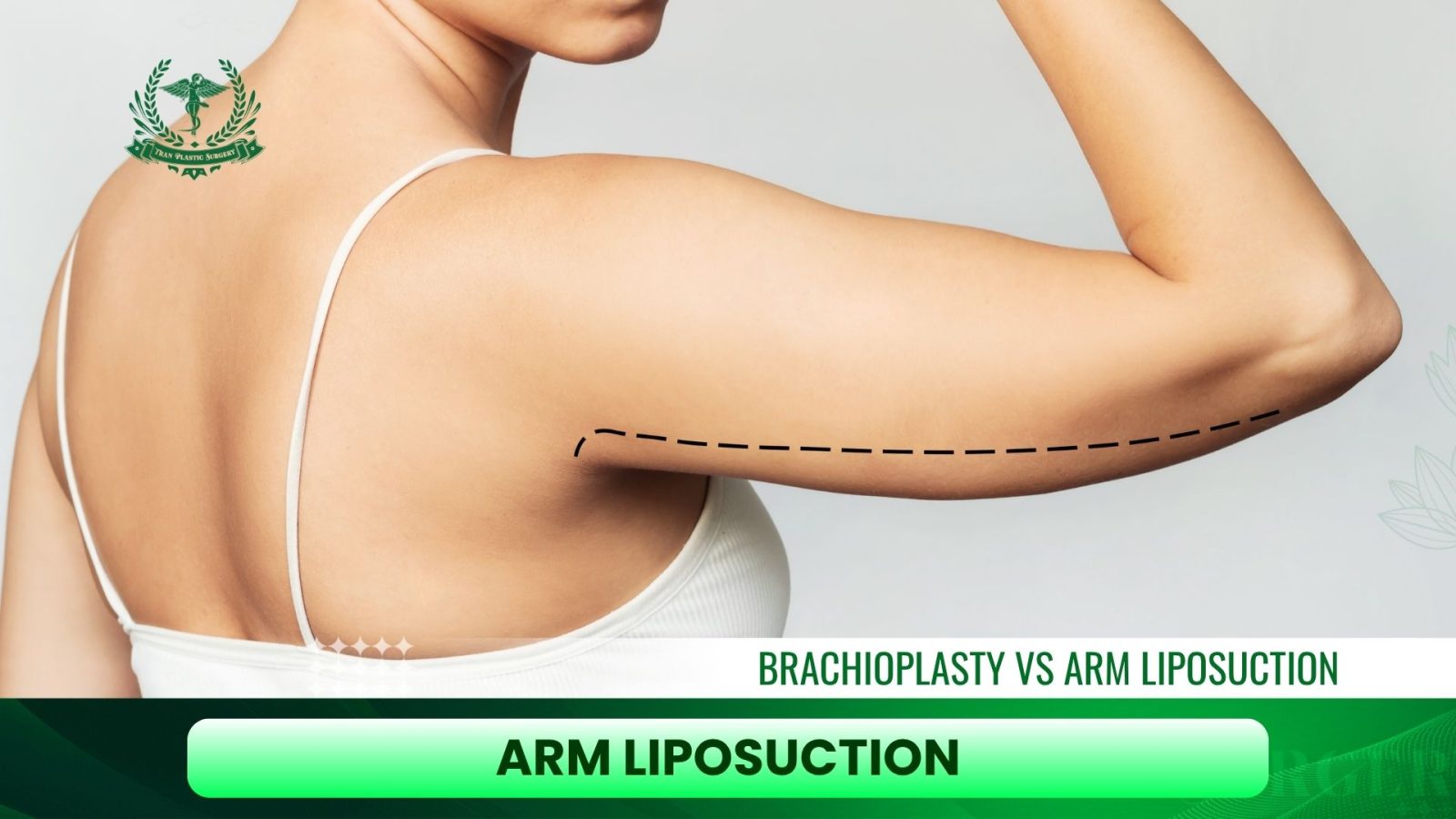
In contrast to brachioplasty, arm liposuction is a procedure designed specifically to address localized fat deposits without removing a significant amount of skin. It is the ideal solution for patients whose primary concern is a disproportionate accumulation of fat that makes their arms appear heavy or bulky. The key to successful arm liposuction is having good skin elasticity.
The procedure involves making small, inconspicuous incisions through which a thin tube called a cannula is inserted. The surgeon then uses the cannula to break up and suction out the unwanted fat cells. The goal is to sculpt the arm into a more slender and defined shape, reducing its overall arm circumference and creating a more proportionate appearance with the rest of the body. Because the skin is not excised, the results rely on the skin’s natural ability to contract and conform to the newly reduced volume. This makes arm liposuction an excellent choice for individuals who have stubborn pockets of excess fat on their arms but do not have a substantial amount of loose skin. The scarring is minimal, often resembling small puncture marks that are easily hidden.
The Head-to-Head Comparison: Brachioplasty vs. Arm Liposuction
Deciding between a brachioplasty vs. arm liposuction can feel daunting. To simplify the choice, it’s helpful to compare the two procedures side-by-side across several key factors. This direct comparison, informed by expert data, will clarify which procedure is best suited to address your specific aesthetic goals and physical concerns.
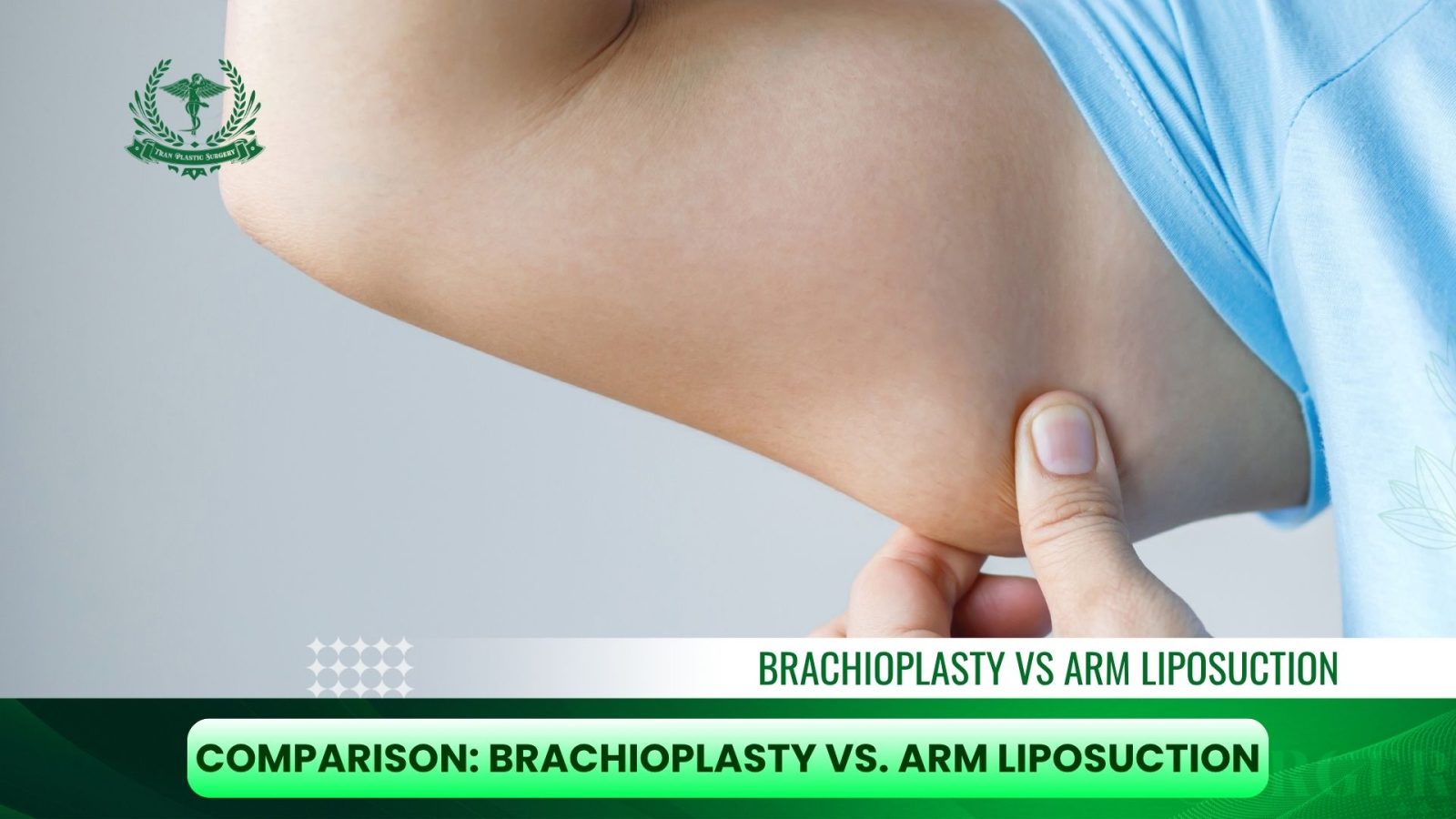
1. Ideal Candidate
- Brachioplasty: The ideal candidate for an arm lift surgery is a person with a significant amount of loose, hanging skin. This condition is often a result of aging or major weight loss. While some fat removal may be a component of the procedure, the primary concern is skin laxity. A patient with poor skin elasticity is a prime candidate, as their skin will not naturally snap back after fat removal alone.
- Arm Liposuction: An ideal candidate for arm liposuction has good to excellent skin elasticity but suffers from stubborn, localized fat deposits that create a bulky or disproportionate appearance. Their skin must be able to retract on its own to achieve a smooth, contoured result. The patient’s weight should be stable, and their goal should be contouring rather than significant weight loss.
2. Primary Concern Addressed
- Brachioplasty: The core problem addressed by brachioplasty is sagging arm skin. It is the only effective surgical solution for eliminating the “bat wings” and creating a tight, smooth contour.
- Arm Liposuction: The primary issue targeted by liposuction is excess fat on arms. This procedure is for patients who are otherwise a healthy weight but are unable to get rid of disproportionate fat pockets through diet and exercise.
3. Surgical Technique & Incisions
- Brachioplasty: This is a more invasive procedure. It requires a long incision on the inner aspect of the arm, typically extending from the armpit to the elbow. This allows the surgeon to excise the excess skin and tighten the underlying tissues.
- Arm Liposuction: This procedure is much less invasive. It uses very small, strategically placed incisions (just large enough for the cannula) that are often well-hidden in the armpit or near the elbow.
4. Scarring
- Brachioplasty: Brachioplasty scars are a primary consideration. The linear incision results in a permanent scar, which can be visible when the arms are raised. However, modern techniques aim to place the scar in the least visible location possible, and proper post-operative care can significantly improve its appearance.
- Arm Liposuction: Scarring is minimal. The tiny incisions generally heal into small, faint marks that are barely noticeable.
5. Recovery and Downtime
- Brachioplasty: The recovery period for an arm lift is longer and more involved. Patients typically need 2-4 weeks before returning to normal activities and must wear compression garments for several weeks to minimize swelling and support the new contours. Strenuous exercise is restricted for a few months.
- Arm Liposuction: The recovery for arm liposuction is generally shorter and less intense. Most patients can often return to work within 3-5 days, with full recovery taking 4-6 weeks. Swelling and bruising are common, but they subside over time. A compression garment is also worn to aid the healing process.
6. Cost
- Brachioplasty: According to the American Society of Plastic Surgeons (ASPS), the average surgeon’s fee for an arm lift is approximately $6,192. Due to its complexity, longer surgical time, and more extensive nature, the total cost including anesthesia and facility fees is generally higher than for liposuction.
- Arm Liposuction: The average surgeon’s fee for arm liposuction is around $4,449, as reported by the ASPS. This makes it a more cost-effective option, particularly when factoring in lower facility and anesthesia costs due to the procedure’s less invasive nature.
Find Your Solution In Your First Consultation
With a clear understanding of the distinctions and key metrics for these two procedures, you are now equipped to have a more productive consultation. The decision to undergo a brachioplasty vs. arm liposuction requires the personalized guidance of a board-certified plastic surgeon. This is your opportunity to ask critical questions and get a professional opinion. Here are some key points to address:
- Based on my current condition, am I a candidate for arm liposuction alone, or is a brachioplasty the more appropriate choice?
- What are the potential risks and complications? (For context, a literature review of brachioplasty complications shows that while serious issues are rare, minor complications like scarring or seroma can occur in a notable percentage of patients).
- What are the realistic costs for my specific case, given that the ASPS reports an average surgeon’s fee for a brachioplasty is approximately $6,192?
- What is the typical arm lift recovery timeline, and what kind of support will I need during that period?
- What are the expected results, and can I see brachioplasty results before and after photos of your previous patients?
The Right Choice for You - Should You Choose Brachioplasty or Arm Liposuction
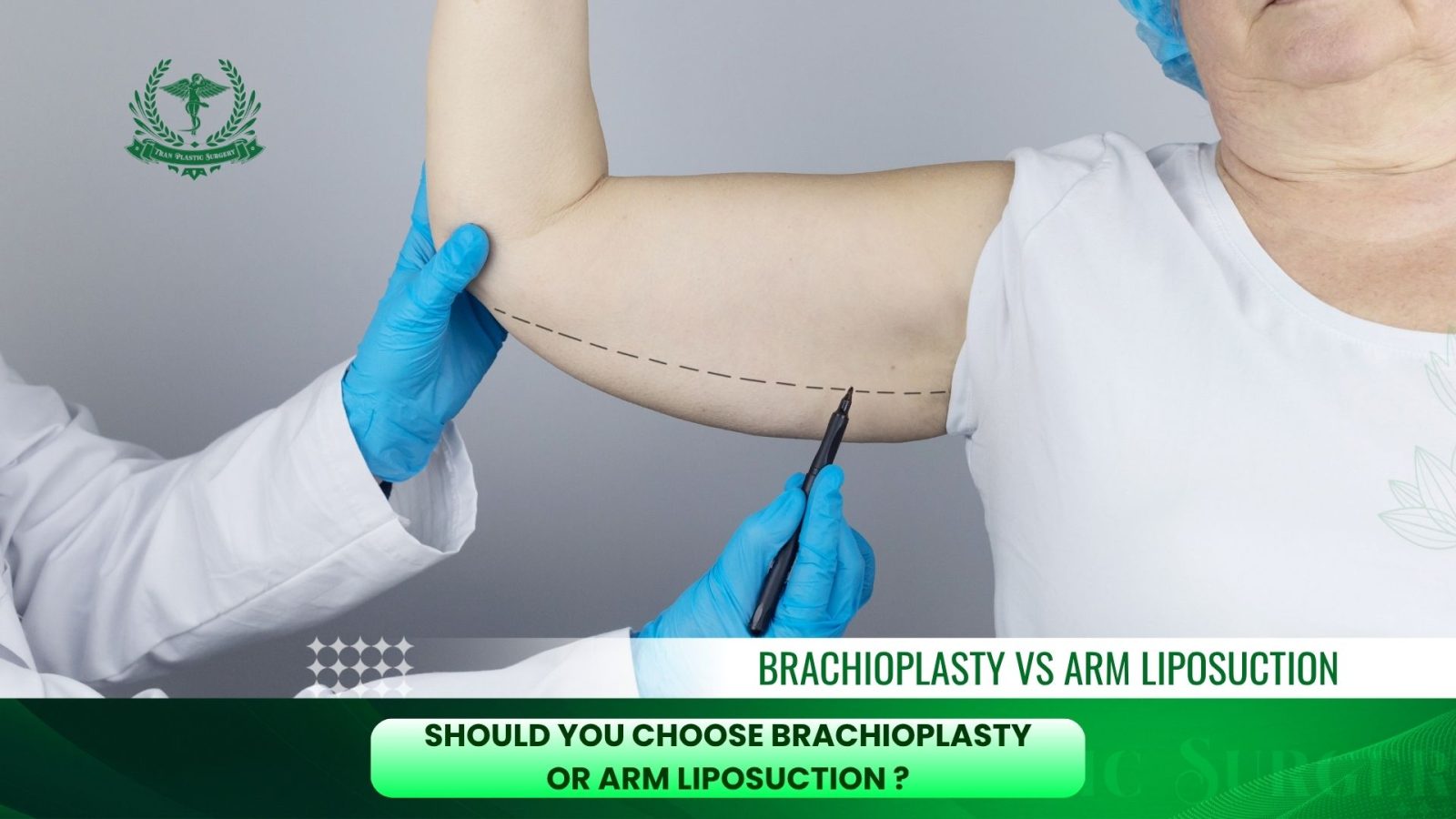
Ultimately, the choice between an arm lift and arm liposuction hinges on one central factor: your primary concern. If loose, hanging skin is your main issue, a brachioplasty is the only effective solution to achieve a truly tightened and toned appearance, and patient satisfaction rates for this procedure remain high, often exceeding 80%. Conversely, if you have good skin elasticity and are simply looking to reduce localized pockets of excess fat on your arms, liposuction is an excellent, less invasive option with a shorter recovery period.
The increasing popularity of both procedures with arm lifts seeing a dramatic rise in demand over the last two decades is a testament to their ability to deliver life-changing results. Remember, the most important step is to schedule a consultation with a qualified plastic surgeon. An expert’s assessment is the only way to get a definitive recommendation that aligns with your body, your goals, and your safety.

